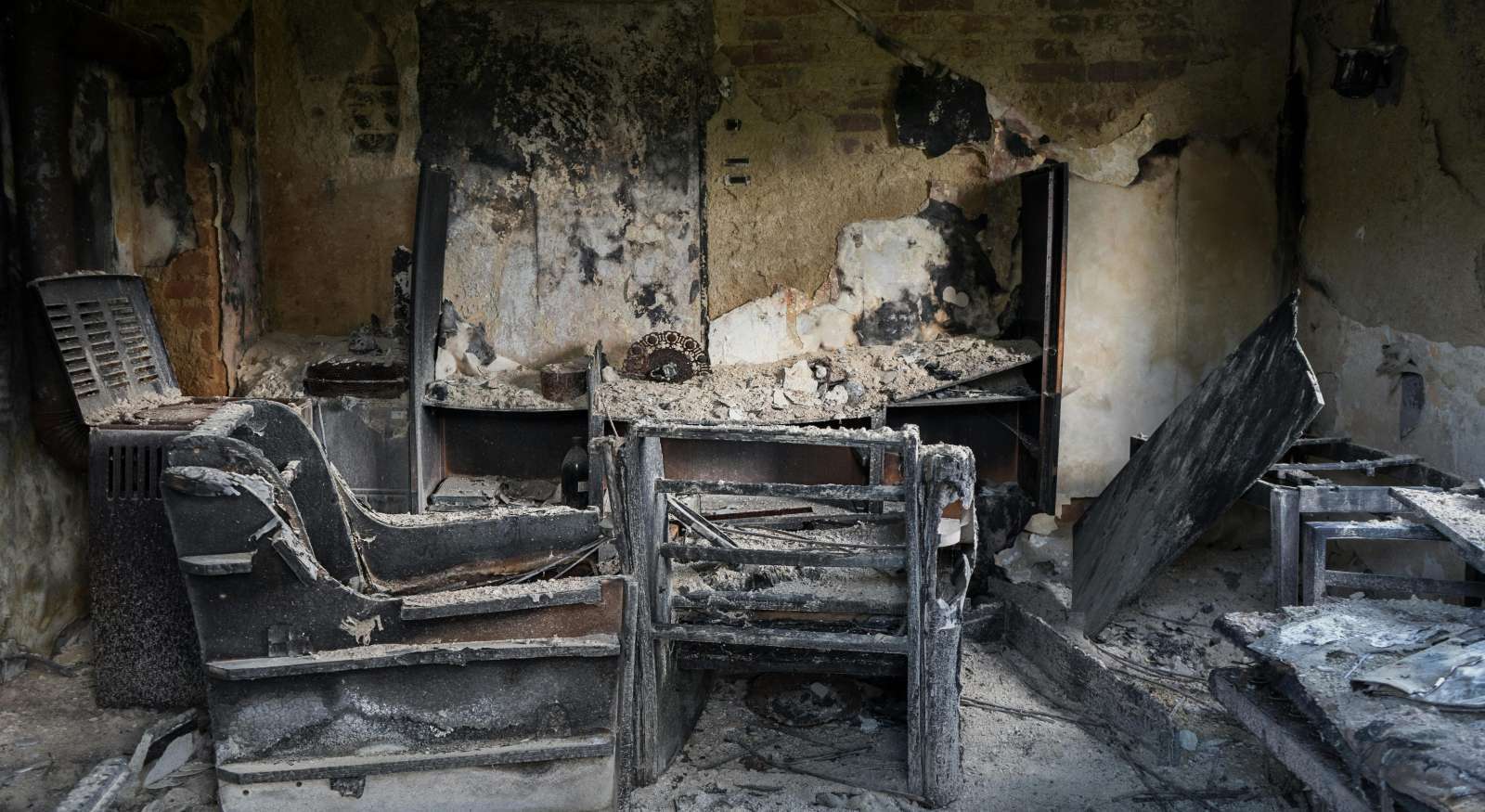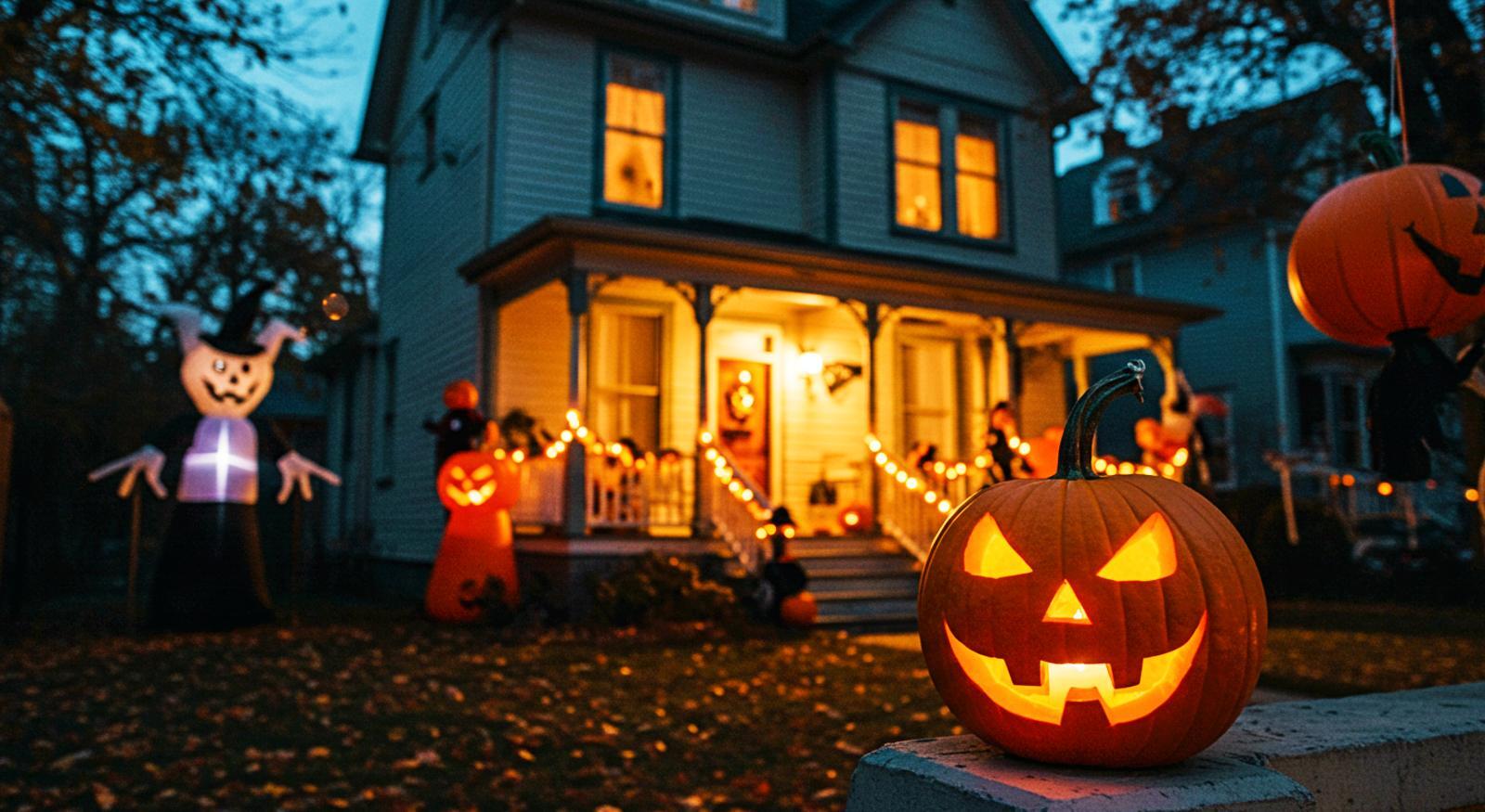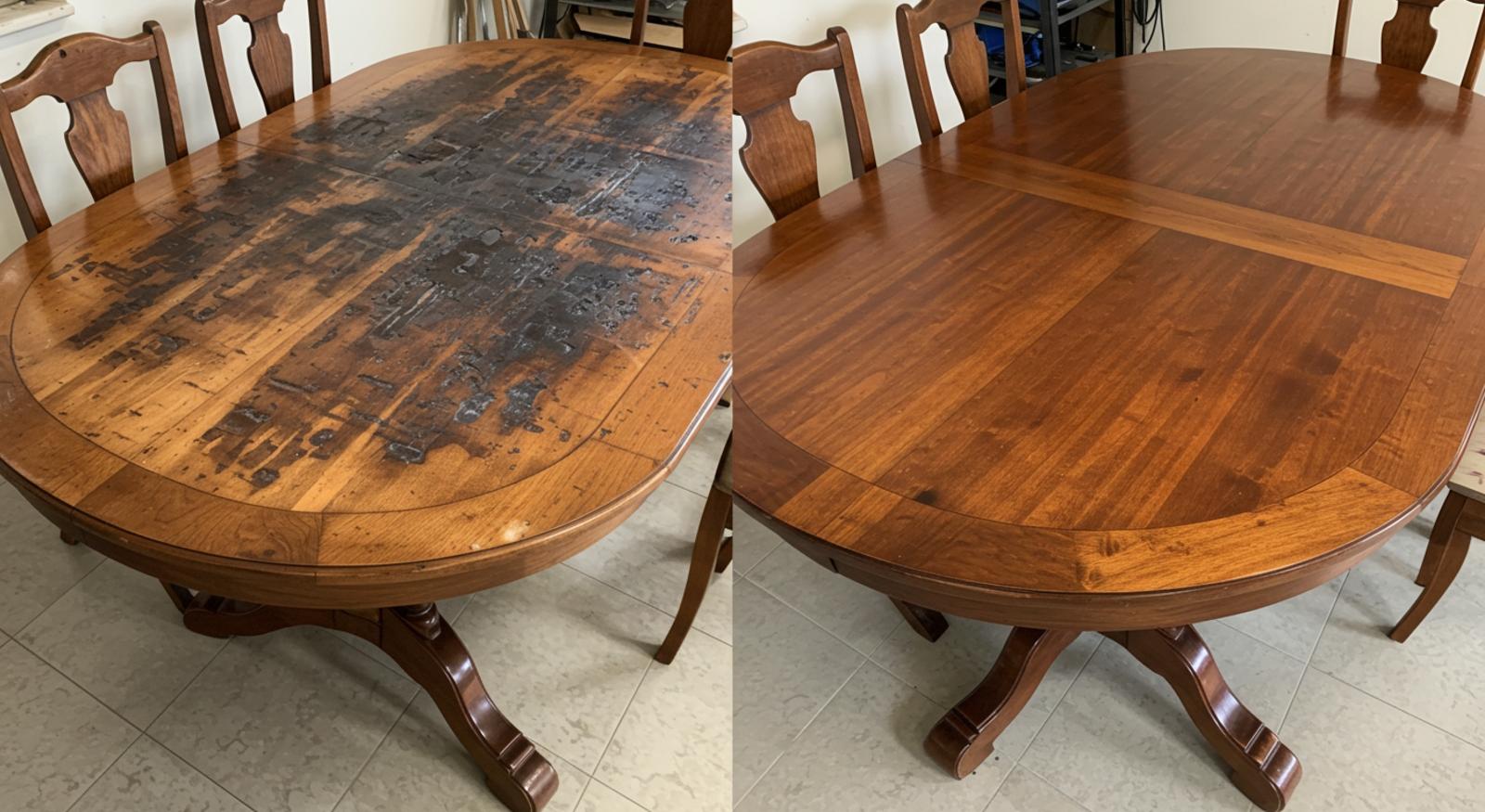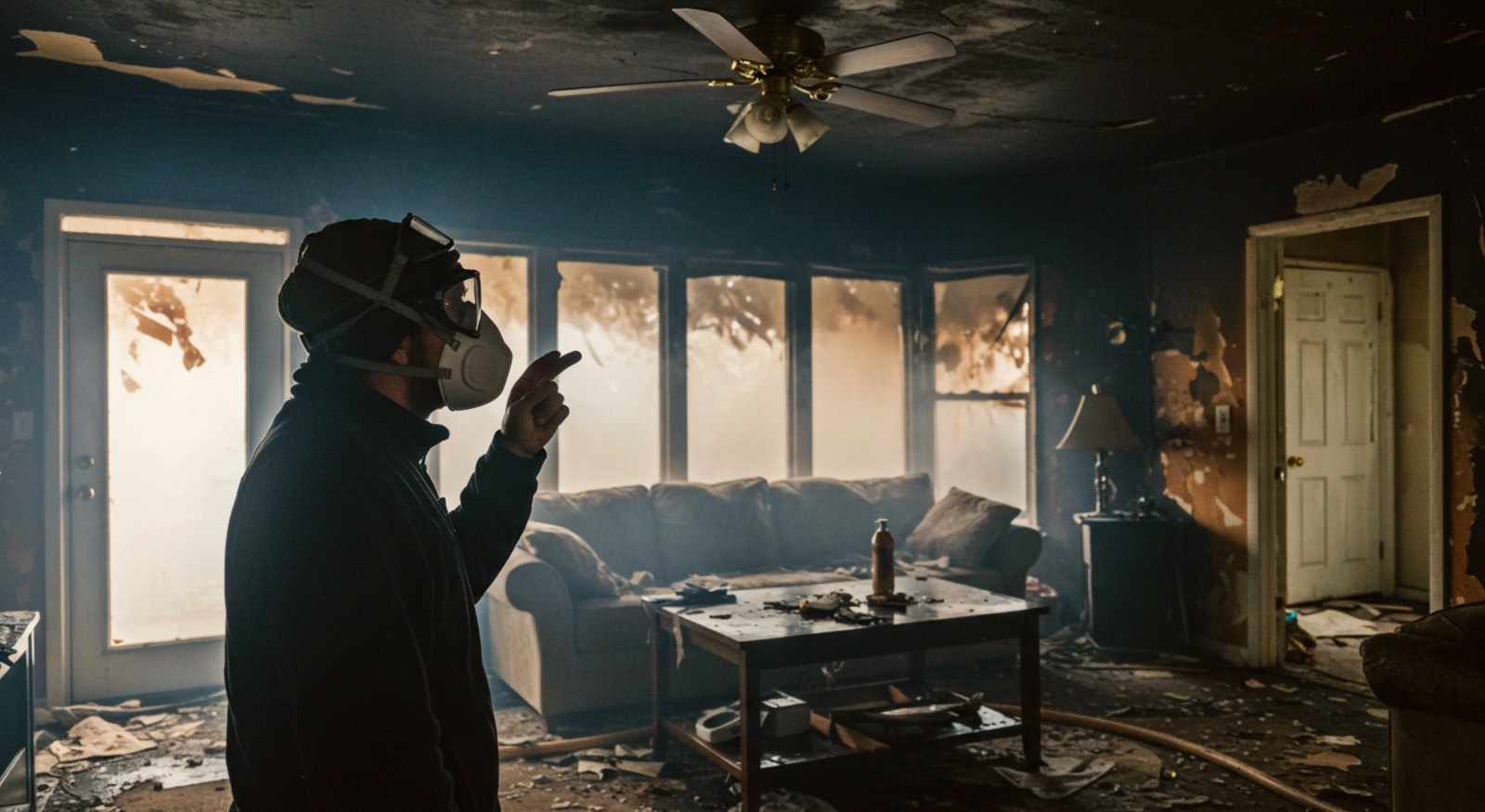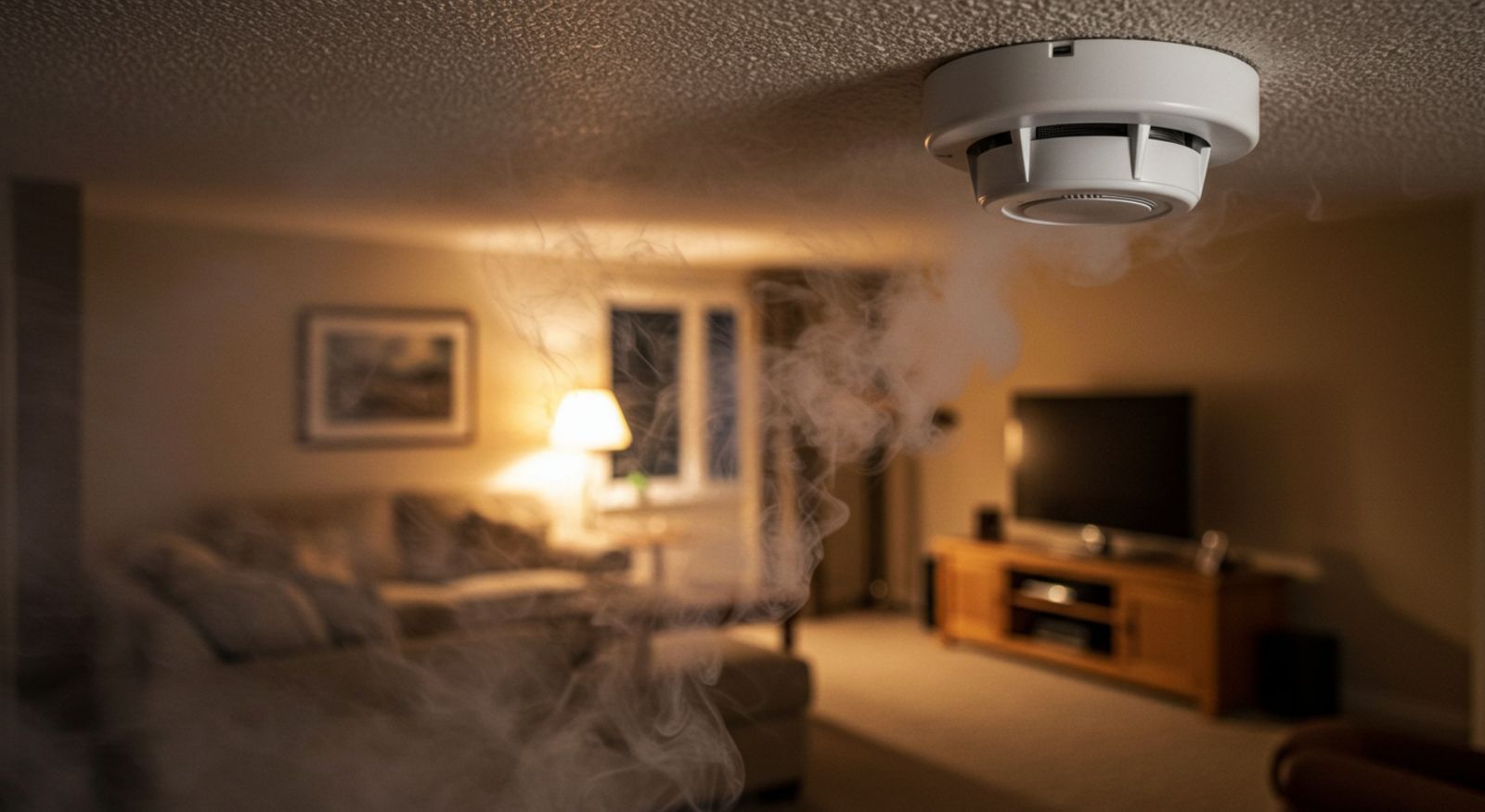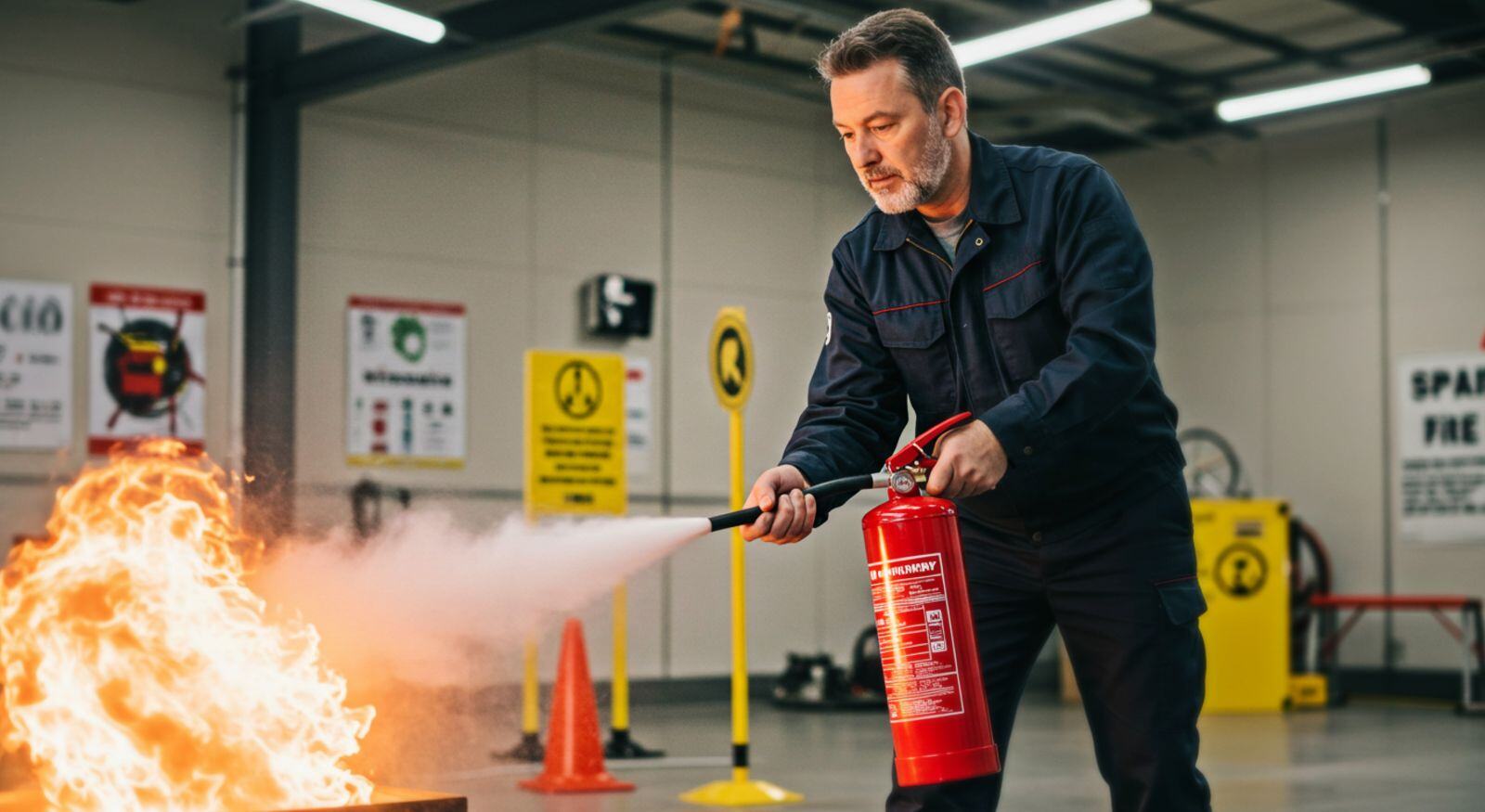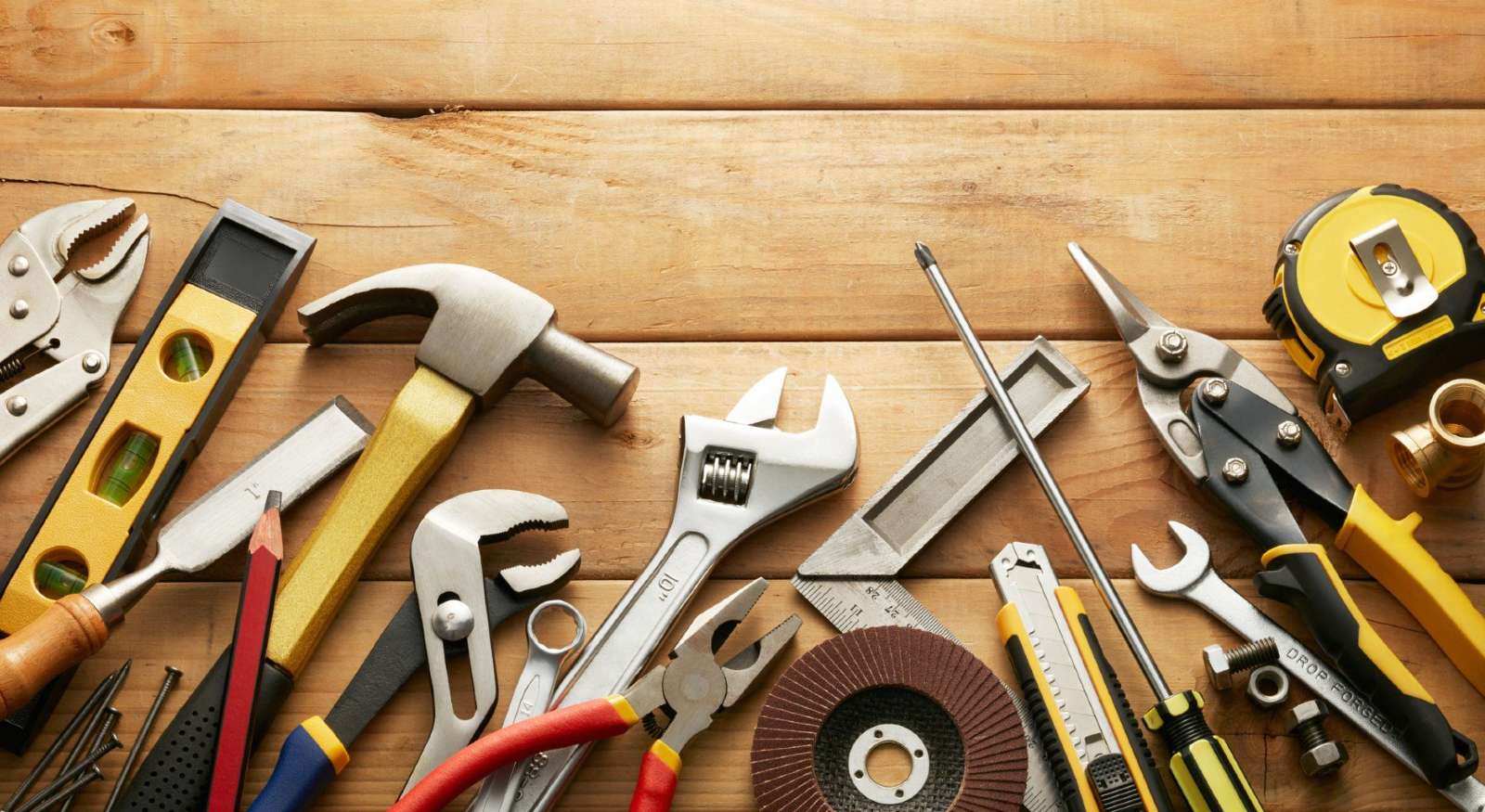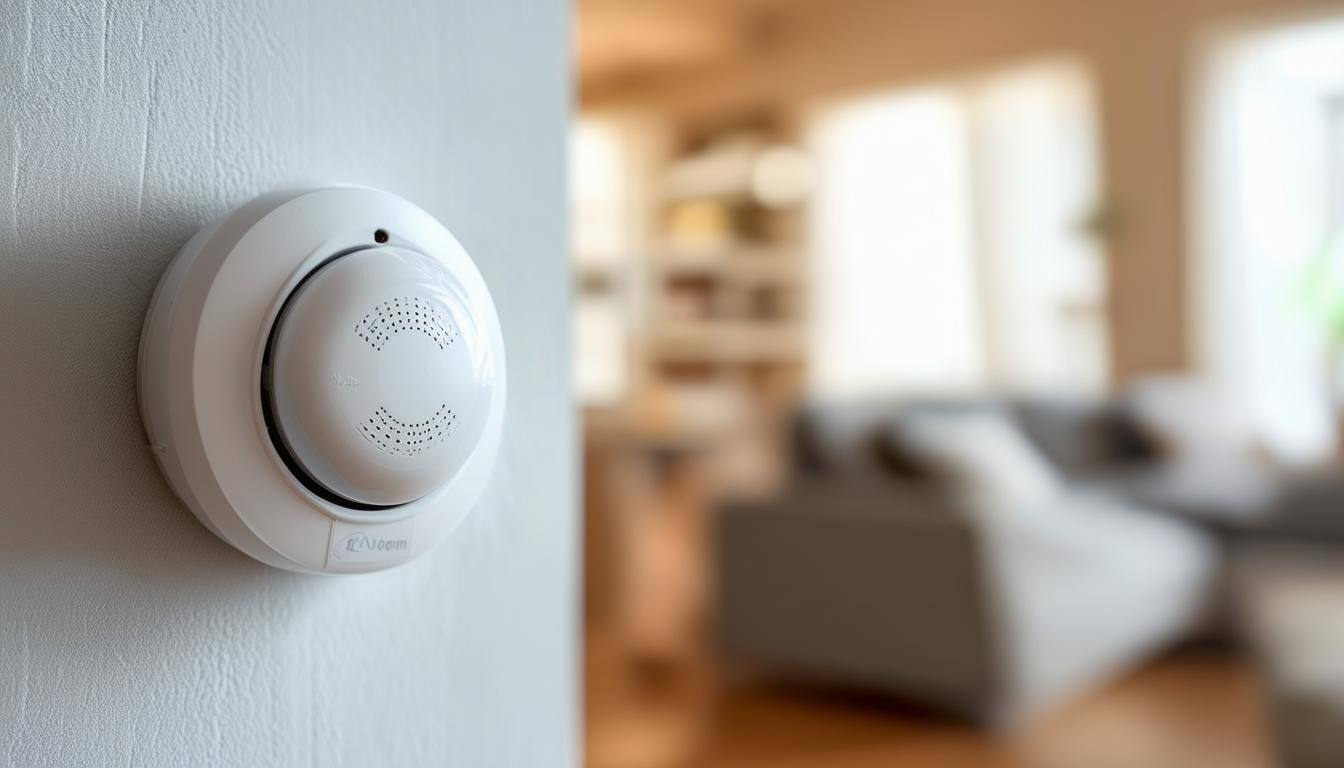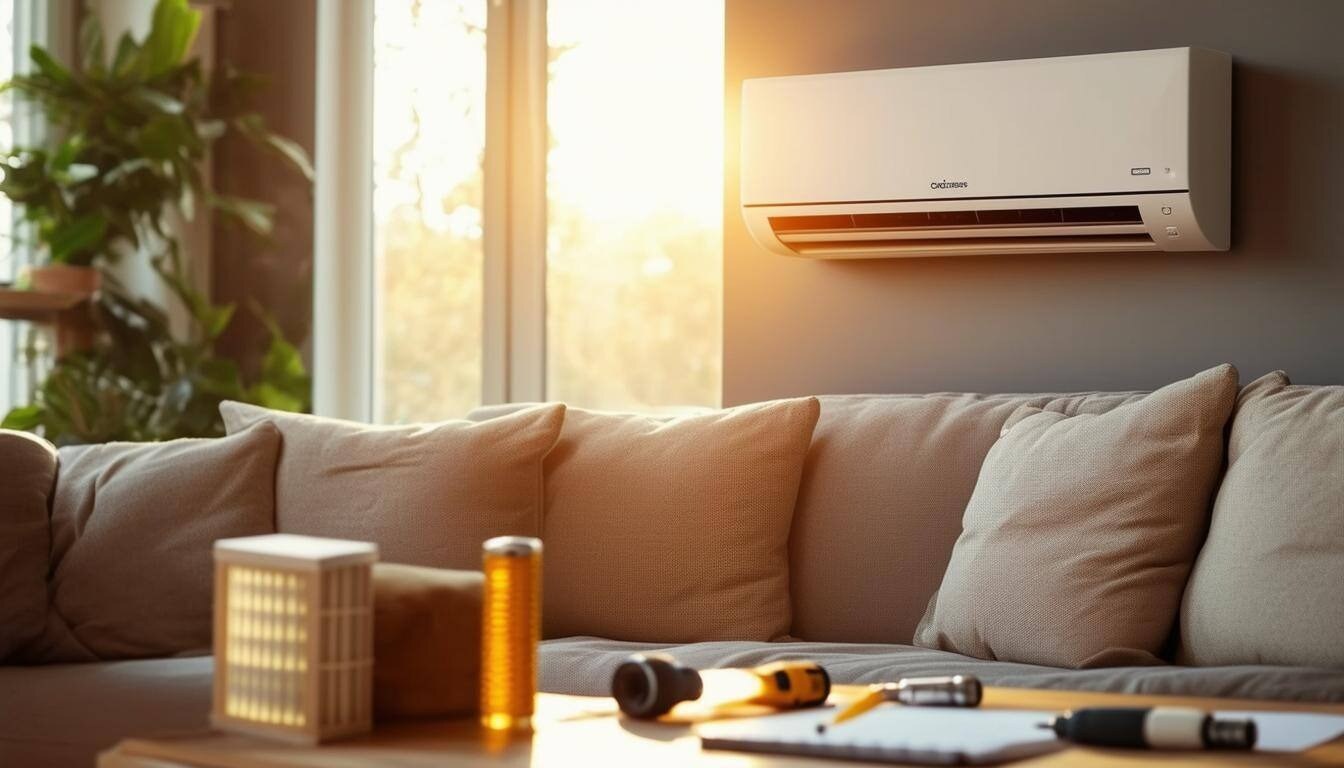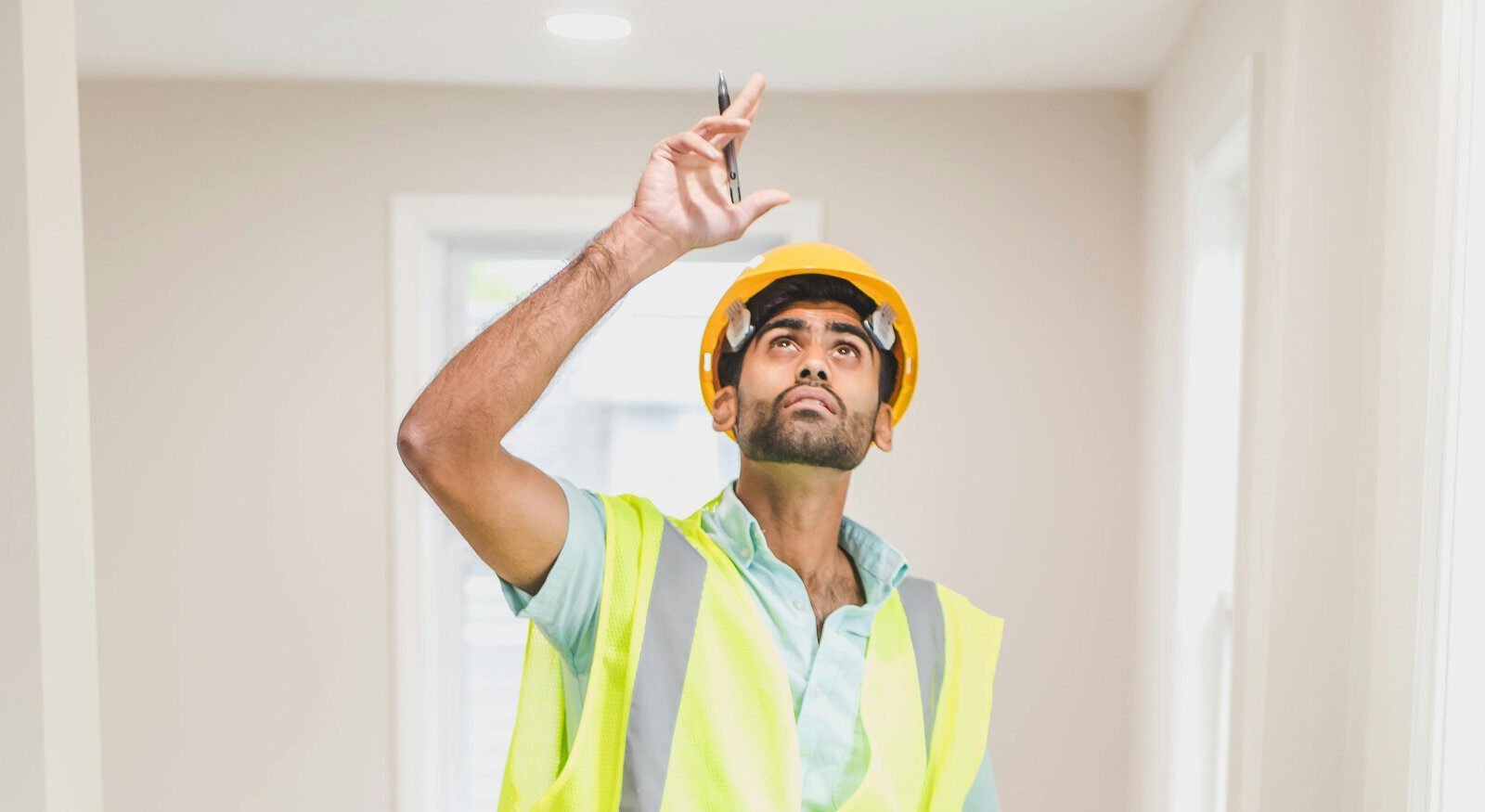After the fire: A homeowner's guide to soot and smoke
September 15th, 2025
4 min read

When there is a fire in people's homes, their priority is usually to safeguard their loved ones and then call the fire department to extinguish the flames. But have you ever wondered what happens afterward? If you think once the flames are put out, there is no more danger, think again.
The harsh reality is that there is a silent, pervasive threat that embeds itself in your home and objects, causing damage that usually cannot be seen until it's too late. But that's not all: both smoke and soot can impact your air quality, causing adverse health effects on the property's occupants.
As the fire damage restoration experts in South Arkansas, we at Restore-It have helped with many such cases. We know about the dangers of smoke and soot, and we are here to teach you how to navigate them safely towards your path to recovery.
Today, we will talk about the hidden dangers of smoke and soot, what you can and should do immediately to protect your home and your family, and why entrusting the cleanup to professionals is not just a convenience, but a critical step in a complete and safe restoration.
Health implications of soot and smoke
Fire produces a complex mix of chemicals, gases, and fine particles or PM2.5, which the U.S. Environmental Protection Agency (EPA) identifies as a public health threat. On the other hand, soot is composed of microscopic particles and, when inhaled, can penetrate deeply into the lungs and the bloodstream, causing health issues. According to the National Fire Protection Association (NFPA), smoke inhalation is responsible for the majority of deaths caused by house fires.
As we previously mentioned, exposure to soot and smoke residue has health implications that can go beyond the initial respiratory irritation and turn into serious long-term effects:
- Respiratory illnesses: According to the American Lung Association, short-term exposure is linked to increased mortality in infants, as well as hospital admissions and hospitalization for respiratory diseases such as asthma and chronic obstructive pulmonary disease (COPD). On the other hand, long-term exposure is linked to: developing childhood asthma, worsened adult COPD, slowed lung growth in children/teens, increased risk of heart attacks, strokes, lung cancer, and diabetes, neurological effects in adults (reduced brain volume, cognitive decline, dementia), adverse pregnancy/birth outcomes (preterm birth, low birth weight, infant mortality), and increased cardiovascular disease mortality.
Check this video from the American Lung Association to learn more
- Cardiovascular issues: As the fine particles enter the bloodstream, they can contribute to plaque buildup and inflammation, increasing the risk of heart attack, stroke, and irregular heart rhythms.
- Cancer risk: When common household materials like plastics, treated wood, and fabrics burn, they release a cocktail of hazardous substances, including benzene, formaldehyde, and polycyclic aromatic hydrocarbons (PAHs). The American Cancer Society warns that many of these chemicals are either known carcinogens or are probably carcinogenic to humans. For example, the American Cancer Society notes that long-term exposure to benzene is specifically linked to an increased risk of leukemia, particularly acute myeloid leukemia (AML).
- Neurological and developmental concerns: Soot exposure has been linked to potential neurological effects, including an increased risk of some reproductive and developmental problems in men and women, including reduced fertility and birth defects.
Even a small fire releases a significant volume of hazardous materials, contaminating every surface in your home, including drywall, flooring, and personal belongings. Therefore, thorough and professional remediation is not merely a luxury but an absolute necessity.
Immediate steps to limit damage after a fire
Right after the fire has been put out, you might think it's time to roll up your sleeves and get to work on the cleaning front... but not so fast! You must proceed with caution, as the hazardous chemicals left from the previous fire are still there and can affect you. Here are some tips to help you navigate the aftermath:
Ensure the safety of everyone in the home
Do not re-enter the property until fire officials have declared it safe to do so. If the fire was extensive or you have family members with respiratory issues or are immunocompromised, consider relocating them temporarily to safeguard their health.
Also, avoid touching any soot-covered surfaces with your bare hands. Consider using gloves, a mask, and eye protection to minimize personal exposure.
Contact your insurance company right away
The sooner you inform your insurance adjuster, the sooner you can file a claim to start the process of mitigation and eventual restoration. Make sure to take pictures and document as much as possible for your records, and keep a detailed list of all damaged items.
Call a fire restoration company
Once you are cleared to go inside, you should start focusing on how to mitigate the risks. Mold can quickly grow from firefighting efforts, adding to the already dangerous mix of particulate matter left in your home. By working with a trusted restoration company, you can begin your recovery path with confidence.
To safeguard your health and to avoid expensive errors (issues with your insurance claim), we highly advise against attempting the cleanup yourself. Instead, leave it to professionals. They have the equipment and the experience to deal with the aftermath of a fire safely and effectively.
Restore-It: Your partner in your recovery
The aftermath of a fire is a traumatic event, and the last thing you need is the added burden of a complicated and dangerous cleanup. This is why it's so important to have a trusted restoration company at your side.
As a firm certified by the Institute of Inspection Cleaning and Restoration Certification (IICRC), Restore-It has helped hundreds of families get their lives back on track. We are well aware of the emotional impact this type of disaster has, and we are ready to help you navigate this process.
Our trained professionals use industry-leading techniques and equipment to ensure a safe, thorough, and complete restoration. We handle everything from the initial assessment and insurance coordination to the final, meticulous cleanup, leaving you with a home that is truly clean and healthy.
If your home has been affected by a fire, the safest and most effective solution is to call the professionals. Contact Restore-It today for a free consultation and let us help you restore your home and your peace of mind.
Topics:





